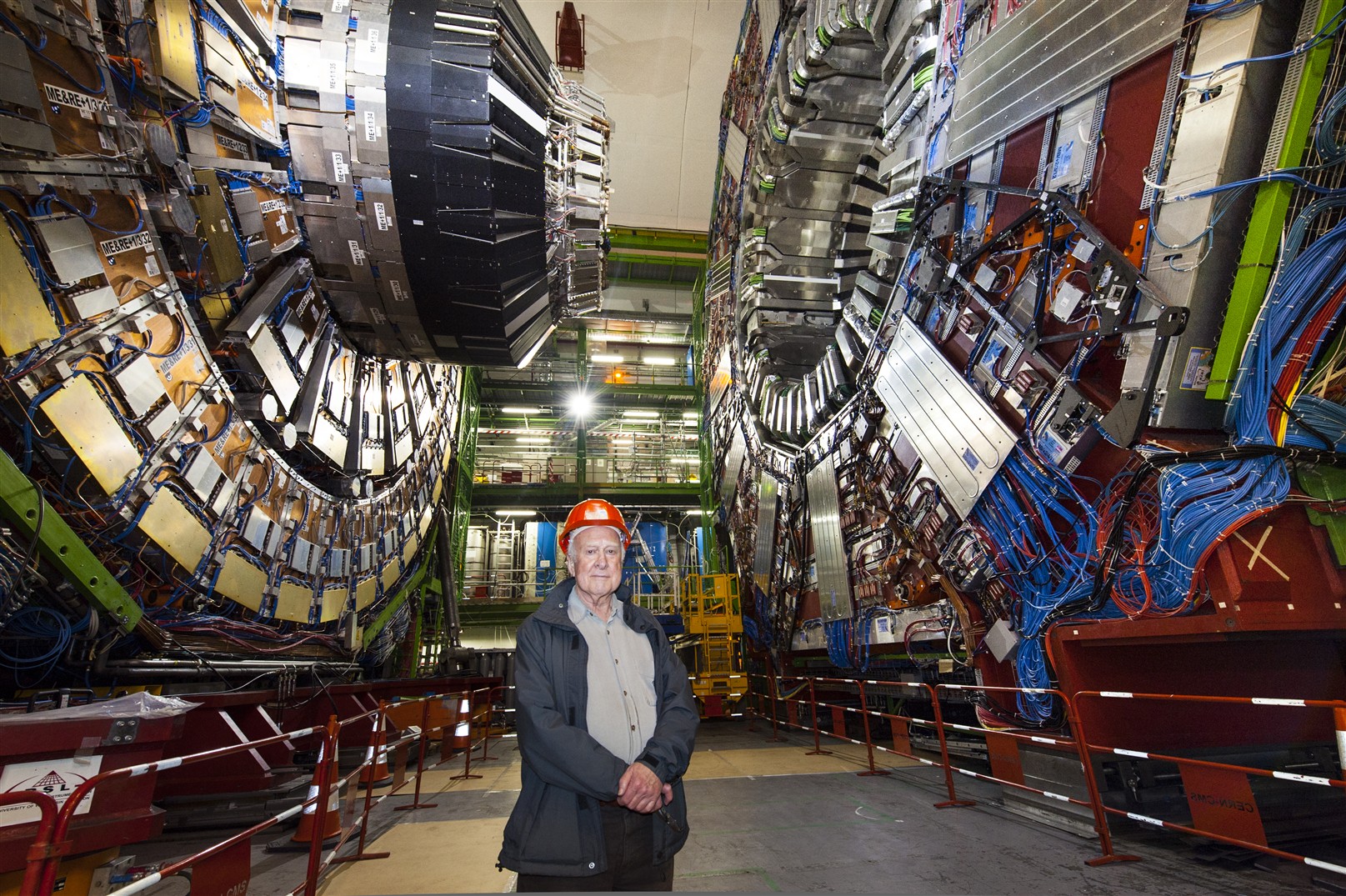Peter Higgs has passed away at the age of 94. An iconic figure in modern science, Higgs in 1964 postulated the existence of the eponymous Higgs boson. Its discovery at CERN in 2012 was the crowning achievement of the Standard Model (SM) of particle physics – a remarkable theory which explains the visible universe at the most fundamental level.
Alongside Robert Brout and François Englert, and building on the work of a generation of physicists, Higgs postulated the existence of the Brout-Englert-Higgs (BEH) field. Alone among known fundamental fields, the BEH field is “turned on” throughout the universe, rather than flickering in and out of existence and remaining localized. Its existence allowed matter to form in the early universe some 10-11 s after the Big Bang, thanks to the interactions between elementary particles (such as electrons and quarks) and the ever-present BEH field. Higgs and Englert were awarded the Nobel prize for physics in 2013 in recognition of these achievements.
“Besides his outstanding contributions to particle physics, Peter was a very special person, an immensely inspiring figure for physicists around the world, a man of rare modesty, a great teacher and someone who explained physics in a very simple yet profound way,” said CERN’s Director-General Fabiola Gianotti, expressing the emotion felt by the physics community upon his loss. “An important piece of CERN’s history and accomplishments is linked to him. I am very saddened, and I will miss him sorely.”
Peter Higgs’ scientific legacy will extend far beyond the scope of current discoveries. The Higgs boson – the observable “excitation” of the BEH field which he was the first to identify – is linked to some of most intriguing and crucial outstanding questions in fundamental physics. This still quite mysterious particle therefore represents a uniquely promising portal to physics beyond the SM. Since discovering it in 2012, the ATLAS and CMS collaborations have already made impressive progress in constraining its properties – a painstaking scientific study which will form a central plank of research at the LHC, high-luminosity LHC and future colliders for decades to come, promising insights into the many unanswered questions in fundamental science.
(Video: CERN)

